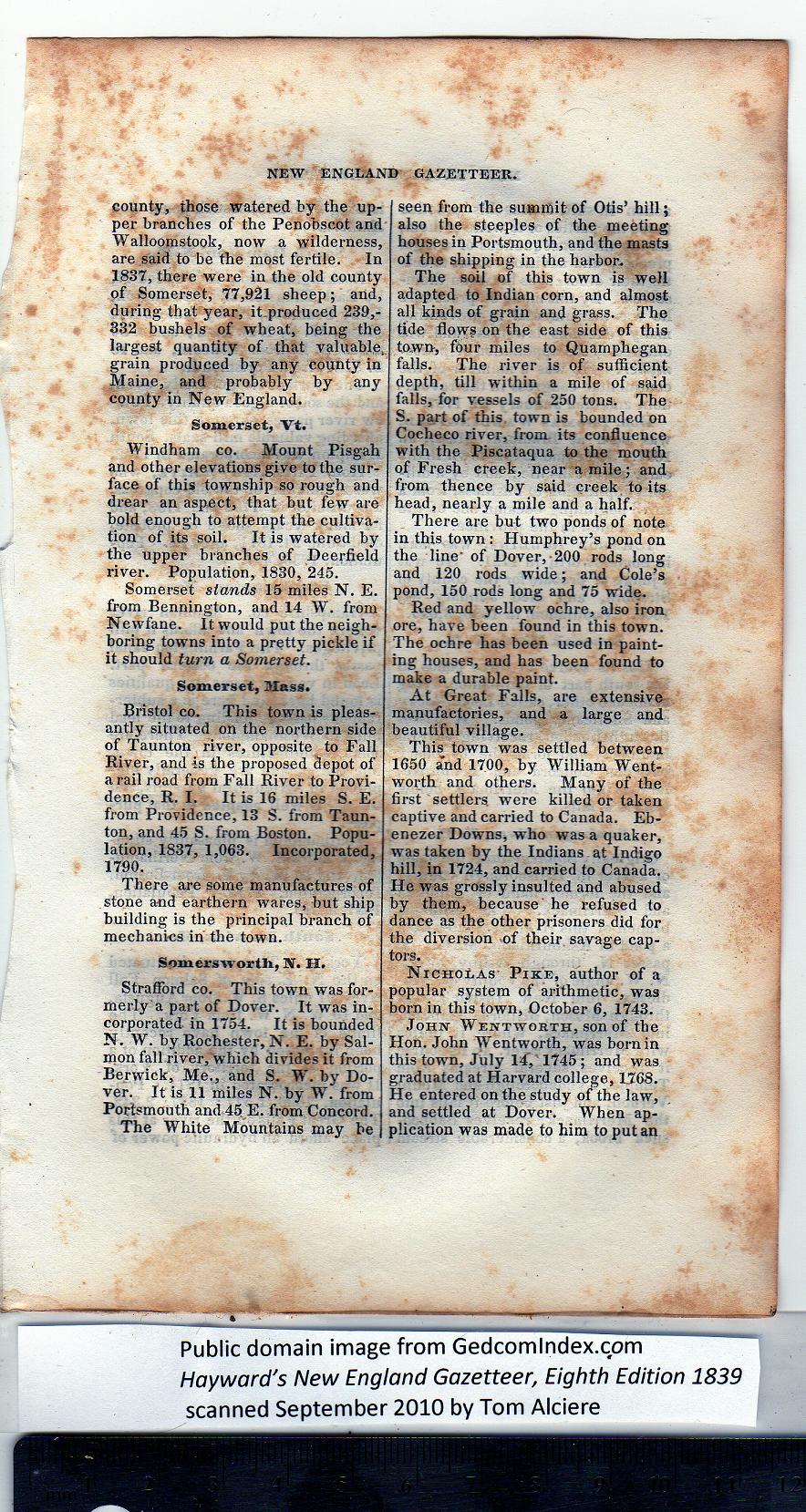|
county, those watered by the up-
per branches of the Penobscot and
Walloomstook, now a wilderness,
are said to be the most fertile. In
1837, there were in the old county
of Somerset, 77,921 sheep; and,
during that year, it produced 239,-
332 bushels of wheat, being the
largest quantity of that valuable,
grain produced by any county in
Maine, and probably by any
county in New England.
Somerset, Vt.
Windham co. Mount Pisgah ,
and other elevations give to the sur-
face of this township so rough and
drear an aspect, that but few are
bold enough to attempt the cultiva-
tion of its soil. It is watered by
the upper branches of Deerfield
river. Population, 1830, 245.
Somerset stands 15 miles N. E.
from Bennington, and 14 W. from
Newfane. It would put the neigh-
boring towns into a pretty pickle if
it should turn a Somerset.
Somerset, Mass.
Bristol co. This town is pleas-
antly situated on the northern side
of Taunton river, opposite to Fall
River, and is the proposed depot of
a rail road from Fall River to Provi-
dence, R. I. It is 16 miles S. E.
from Providence, 13 S. from Taun-
ton, and 45 S. from Boston. Popu-
lation, 1837, 1,063. Incorporated,
1790.
There are some manufactures of
stone and earthern wares, but ship
building is the principal branch of
mechanics in the town.
Somerswortli, INT. H.
Strafford co. This town was for-
merly a part of Dover. It was in-
corporated in 1754. It is hounded
N. W. by Rochester, N. E. by Sal-
mon fall river, which divides it from
Berwick, Me., and S. W. by Do-
ver. It is 11 miles N. by W. from
Portsmouth and 45 E. from Concord. |
The White Mountains may be
seen from the summit of Otis’ hill;
also the steeples of the meeting
houses in Portsmouth, and the masts
of the shipping in the harbor.
The soil of this town is well
adapted to Indian corn, and almost
all kinds of grain and grass. The
tide flows on the east side of this
to.wn, four miles to Quamphegan
falls. The river is of sufficient
depth, till within a mile of said
falls, for vessels of 250 tons. The
S. part of this town is bounded on
Cocheco river, from its confluence
with the Piscataqua to the mouth
of Fresh creek, near a mile; and
from thence by said creek to its
head, nearly a mile and a half.
There are but two ponds of note
in this town: Humphrey’s pond on
the line' of Dover, 200 rods long
and 120 rods wide; and Cole’s
pond, 150 rods long and 75 wide.
Red and yellow ochre, also iron
ore, have been found in this town.
The ochre has been used in paint-
ing houses, and has been found to
make a durable paint.
At Great Falls, are extensive
manufactories, and a large and
beautiful village.
This town was settled between
1650 and 1700, by William Went-
worth and others. Many of the
first settlers were killed or taken
captive and carried to Canada. Eb-
enezer Downs, who was a quaker,
was taken by the Indians at Indigo
hill, in 1724, and carried to Canada.
He was grossly insulted and abused
by them, because he refused to
dance as the other prisoners did for
the diversion of their savage cap-
tors.
Nicholas Pike, author of a
popular system of arithmetic, was
born in this town, October 6, 1743.
John Wentworth, son of tbe
Hon. John Wentworth, was born in
this town, July 14, 1745 ; and was
graduated at Harvard college, 1768.
He entered on the study oi the law,
and settled at Dover. When ap-
plication was made to him to put an |
